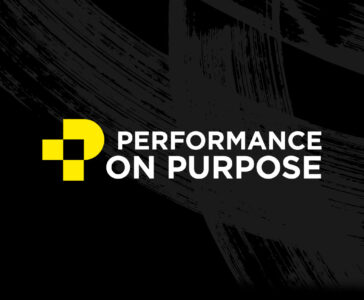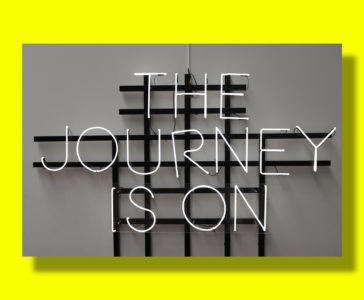In these early weeks of January, many companies are kicking off the new year with all-hands meetings to communicate their strategy, goals and priorities for 2021.
For many employees, these presentations often sound like the teacher’s voice in Peanuts, and afterwards, they go back to work the way they always have.
Organizational Objectives and Personal Relevance
By contrast, imagine if your organizational objectives could be personally relevant to every team member and it was clear how their role connected to the organization’s purpose and success. Perhaps you could even inspire them.
Sound crazy?
Purpose-Driven Objectives
For years, we’ve been working with companies to identify and live their purpose – their core reason for being and the impact they seek to have on the world. And as Gallup’s research over the last 20 years shows, companies that weave their purpose into their culture elevate employee engagement and productivity significantly.
Identifying and communicating your purpose is clearly an important step. However, to make it personally relevant to individual employees, it’s also crucial to integrate your purpose into daily activities and priorities. To help our clients make this happen in recent years, we’ve embraced the OKR methodology invented by Andy Grove at Intel, leveraged currently by Google, Starbucks and The Gates Foundation, and made famous by John Doerr’s best-selling book from 2017, Measure What Matters.
How OKRs Integrate Purpose
OKR is an acronym for Objectives (the highest priorities you need to accomplish in the coming timeframe) and Key Results (the metrics you’ll use to track your progress). OKRs are shaped with your purpose front and center, and by their nature, help break up big, audacious undertakings into actionable goals and milestones.
In other words, well-crafted OKRs clearly communicate the destination you want to reach, why you’re doing what you’re doing, and how you’ll know you’re on track and have arrived.
For example, Starbucks’ larger purpose is “to inspire and nurture the human spirit – one person, one cup and one neighborhood at a time.” To embed this larger tenet in their operations, Starbucks set an annual objective to “focus on adding less sugary drinks and healthy food” and a related key result of “introduce a light version of our popular mocha beverage.” They successfully made this result happen and helped millions of customers “inspire and nurture” a healthier diet.

To reinforce their purpose and encourage their team members to deliver these types of experiences, Starbucks’ famous aprons have these key thoughts on the inside facing employees every day.
For a closer to home example, Fathom’s purpose is to “awaken the courage to choose and the power to create a more meaningful future.” When the pandemic started in 2020, we created an objective and key results surrounding the development of our community strategy. Based on our strategic work, we launched and supported three thriving communities that have empowered hundreds of participants to stay creative during these challenging times.
Connect Everyone’s Role to the Objectives
As I said in the opening of this article, many companies share their objectives with the team. However, in my experience, few take the time to work with each individual to clearly connect how their role makes the objective and ultimately, the company’s purpose, possible. That connection makes all the difference in inspiration and meaning.
A great example that drives this point home comes from the early 1960s, when President Kennedy set the audacious objective of reaching the moon within the decade. After making this announcement, JFK visited NASA and Cape Canaveral in 1962. On his tour, he encountered a janitor carrying a broom and introduced himself by saying, “Hi, I’m Jack Kennedy. What are you doing?” The janitor replied “Well, Mr. President, I’m helping to put a man on the moon.”
Imagine how engaged and inspired your team members would be if they felt this connected to a large and purposeful objective.
Celebrate and Promote Everyone’s Contributions
Once it’s clear how every team member contributes, it’s equally important to celebrate and reward these contributions.
A few years ago, KPMG had an objective of strengthening people’s pride, engagement and emotional connection to the firm. They created a firmwide initiative in support of their purpose to “Inspire Confidence. Empower Change.” and created the 10,000 Stories Challenge.
In this challenge, KPMG set out to collect 10,000 stories from their employees, “encouraging them to recognize and celebrate the meaning and positive impact of the work they do.” By its nature, this challenge engaged team member’s imaginations and encouraged them to connect their job to a larger impact on the world. During the year of the challenge, KPMG ended up with more than 42,000 stories submitted and created events, posters, videos, social media and presentations to communicate all this great content.
This program was featured in a Harvard Business Review article entitled How an Accounting Firm Convinced Its Employees They Could Change the World, and resulted in 90% of employees reporting they felt elevated pride in the firm and employee engagement reaching record levels.
Steps to Take
If you haven’t already announced your annual objectives to your team, it is important to think through and powerfully communicate how these goals connect to your larger purpose.
Then, to make it personal, have your managers spend time with all employees to directly connect their role and their objectives to the goals and purpose of the organization.
And finally, if you’re interested in learning more, read John Doerr’s Measure What Matters to hear about more powerful stories of the impact of OKRs and ways you can get started.
Here’s to a great and meaningful 2021.
Want more from Fathom?
Sign up to receive updates about our articles.


